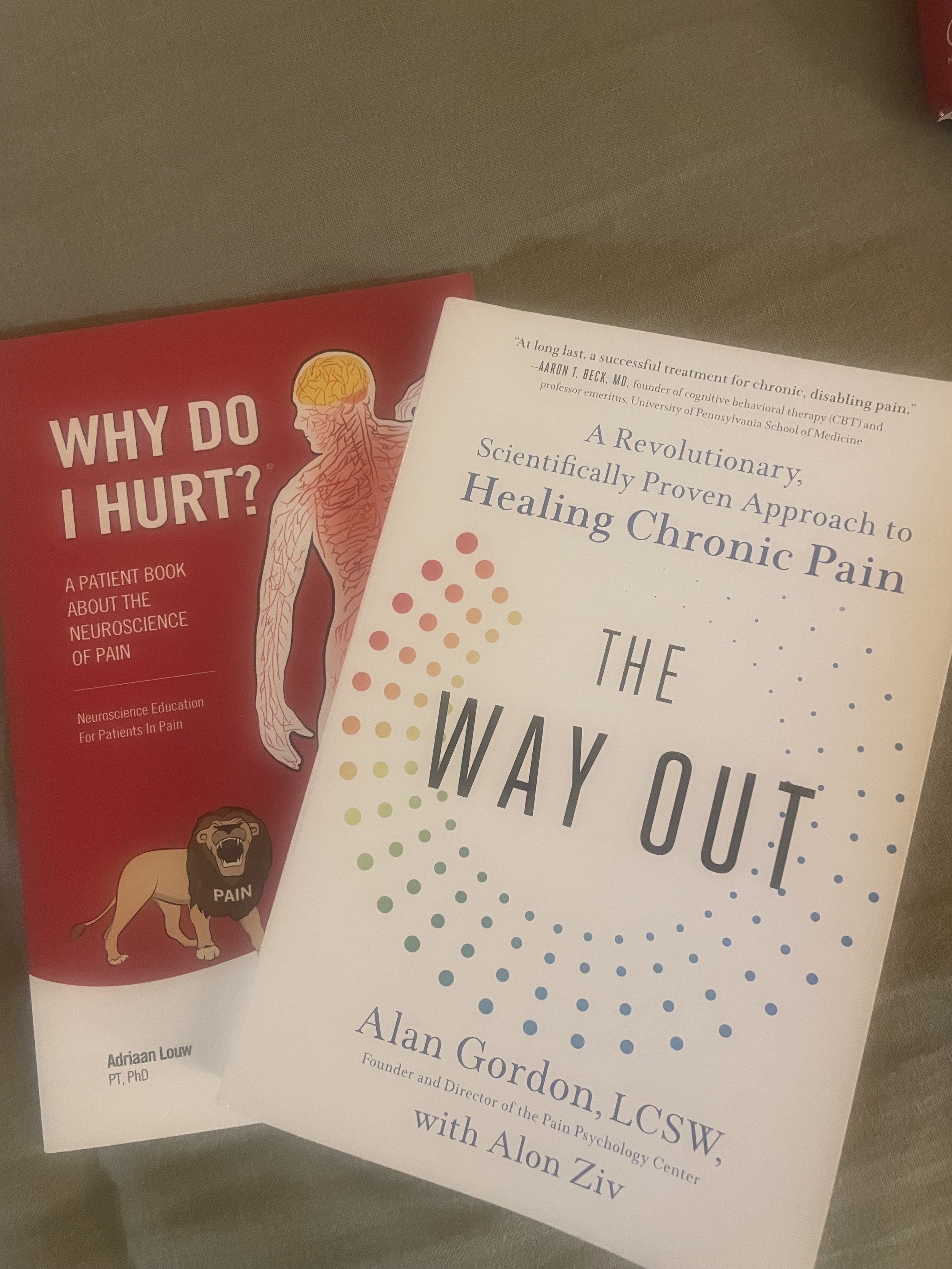Whether it’s acute or chronic, almost everyone would agree that pain is something we don’t like and try to avoid at all costs. What is pain? According to the Oxford Language dictionary it is defined as “physical suffering or discomfort caused by illness or injury”. Simple enough, but what about in the case of chronic pain? That is pain that persists beyond the usual recovery period. In the book “The Way Out”, Alan Gordon refers to this type of pain as Neuroplastic pain. What does that mean? Many people are familiar with the term neuroplasticity, meaning that our brains can create new neural networks and learn and grow constantly. Sounds amazing, right? The downside is that our brain can also learn bad habits, like pain. Yes, sadly we can learn to be in pain. The good news is that if something is learned it can be unlearned.
Our current biomedical model focuses on treating a condition by finding a single, structural cause and fixing it. However, there are many people who report never having had any type of injury, but they’re still dealing with some kind of chronic pain. In the book “Why Do I Hurt? Adrian Louw remind us of some key concepts to keep in mind. “Tissue injury is not needed for pain. Emotional stress can cause pain. Many people suffering from pain had a time in their lives, filled with many stressors, perhaps involving family, work or financial issues, and even, unfortunately, abuse. With all these stressors, the brain perceives threat and thus produces pain.” One thing that almost all modern pain researchers agree on is that pain, especially in the case of chronic pain is a threat response. Even if our pain started with an initial injury, if it has persisted past the normal healing time, then it has become neuroplastic pain. The body is perceiving actual or perceived danger, so it continues to send us threat signals, i.e. - pain.
I have personally seen so many clients benefit from getting more educated on the topic of pain and understanding it is not an indicator of real damage in a joint or a muscle, which can often be demonstrated when we do some applied neurology exercises or a simple and very gentle Feldenkrais®️Movement lesson, and they notice that immediately they’re pain is decreased or even gone. Alan Gordon who I mentioned earlier states that the total cost of chronic pain In the United States alone is more than $600 billion annually! Yet, we don’t seem to see alot of real help and solutions being offered. That’s not acceptable.
So what can we do? Both the methods I work with focus on addressing the brain and the nervous system, to improve the inputs your brain is receiving, and reduce threat. As well as changing chronic movement habits that may be worsening symptoms, getting real education around pain and changing the way we have been taught to think about it can all have a powerful effect to reduce or eliminate chronic pain.
Obviously this is a very complex topic, and these few short paragraphs cannot begin to explain or discuss every aspect of pain, but I hope it provided some food for thought, and if it peaked your interest and you would like to learn more about the work I offer and if it might be able to help you, I would love to hear from you.



